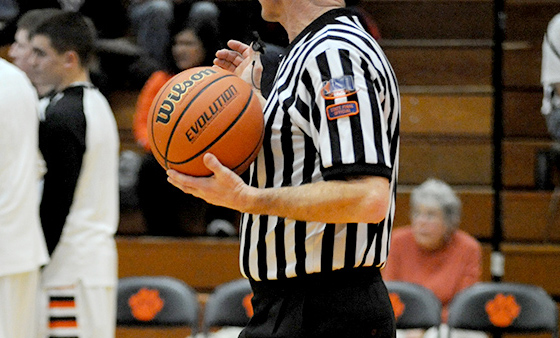Team players: Getting athletes to accept their roles
Struggling to get some of your athletes — or their parents — to accept their limited roles? You’re not alone.
 Getting your athletes to understand, accept and even embrace their roles is one of the biggest areas for developing a successful team. The obvious problem with getting individuals to play roles is that certain roles have much more appeal than others.
Getting your athletes to understand, accept and even embrace their roles is one of the biggest areas for developing a successful team. The obvious problem with getting individuals to play roles is that certain roles have much more appeal than others.
Coach, parent and media attention to the glamour positions is one of the biggest obstacles for getting individuals to accept and embrace less-popular roles. However, these roles are absolutely critical to your teams success.
Accepting roles
Championship teams have players who not only accept these under-appreciated roles but understand their significance and value to the team and they take pride in playing them. As former NBA coaching legend Pat Riley said, “The key to teamwork is to learn a role, accept that role and strive to become excellent playing it.”
Your goal as a coach is to have your athletes accept the role they are given, whatever it may be. How do you get your players to understand and accept their roles? Here are some thoughts.
Defining roles
A key aspect of getting your athletes to accept their roles is to clearly define them. Role definition means that each player must know what is expected both on the court and off the court. It includes the responsibilities that they are expected to handle and fulfill.
Lets take the six-time world champion Chicago Bulls as an example. While Michael Jordan and Scottie Pippen were the primary penetrators and scorers, Steve Kerr basically had to find the opening and knock down the outside jumper. Dennis Rodman and Horace Grant had two responsibilities: rebound and defend. Ron Harper just had to play defense.
It’s usually your superstars who have to take on additional roles (Jordan and Pippen). But the majority of your role players just need to play their role effectively, and everything else takes care of itself. All of your athletes should have one or two primary responsibilities that, when executed successfully, propel the team toward its ultimate goal.
Defining & clarifying roles
There are two ways to define and clarify team roles.
 1. Individual meetings with each athlete. It usually is best to begin the meeting by asking the athlete about the roles or contributions the athlete is currently making. Find out how satisfied they are with their present role as they see it, as well as any future roles that they would like to play. Either the athlete sees things the way you do or you need to bring in your perspective as a coach. If the athlete would like to play a greater role, discuss what you think it takes to reach that goal. It may range from extra practice to transferring to another team to a reality check. The key is to have honest and open communication between you and each athlete.
1. Individual meetings with each athlete. It usually is best to begin the meeting by asking the athlete about the roles or contributions the athlete is currently making. Find out how satisfied they are with their present role as they see it, as well as any future roles that they would like to play. Either the athlete sees things the way you do or you need to bring in your perspective as a coach. If the athlete would like to play a greater role, discuss what you think it takes to reach that goal. It may range from extra practice to transferring to another team to a reality check. The key is to have honest and open communication between you and each athlete.
2. Teammates clarifying roles for each other. An excellent and effective way of clarifying and appreciating roles is to have your team define roles for each other. Have your athletes sit in a circle and describe each person’s role. Ask the team, ”What does Jason bring to this team? What do we need from him to reach the team goals we have set for ourselves?” If Jason is a starter, look for the athletes to discuss his strengths and help him see his role more clearly. If he is a sub, players tend to talk about the need for him to push the starters to get better, as well as appreciate the little things he does. Be a part of the meeting so you can reinforce and redirect comments accordingly.
Role appreciation
Perhaps the biggest key to accepting one’s role is through role appreciation. You are trying to create a sense of pride in playing a role. You want each athlete to understand the contribution that they make to the team and take pride in it, regardless of whether it is valued by the fans or media.
Los Angeles Lakers coach Phil Jackson acknowledged the importance of role playing in his book Sacred Hoops. ”I knew that the only way to win consistently was to give everybody — from the stars to the No. 12 player on the bench — a vital role on the team.”
Nails and glue awards
Getting people to accept roles requires that you appreciate them. By appreciating them, your players begin to understand that their role is valued and ultimately important to the team reaching its common goal. While the fans and media may overlook some vital roles, you can appreciate them in a more effective way through team awards.
One such award that I have developed with teams is called the Nails award and the Glue award. We created the Nails award to acknowledge and appreciate the mental toughness of the athlete(s) who is mentally tough as nails. The award is given on a weekly or bimonthly basis and is voted on by the team. The athletes are not allowed to vote for themselves. The Glue award focuses on team aspects and is symbolized by the glue that binds the team together. The athletes vote for the teammate who had the best team attitude demonstrated by encouraging teammates and making individual sacrifices.
Create various awards for whatever roles you deem important to your teams success, like recognizing the player with the most rebounds, assists, charges taken or screens set. Let your players come up with the names for the award. The Arizona men’s basketball team created the All-Props Team to acknowledge the player who best exemplified the teams standards for success. Determine your award based on objective stats or have your team vote for the athlete they felt did the best job. Announce the award at practice, put up a sheet on the athletes locker, and add his or her name to the main award list in the locker room.
Jeff Janssen directs Leadership Academies for the nation’s top colleges. For more information on developing leaders, team building and mental toughness, visit his website at www.ChampionshipCoachesNetwork.com.





